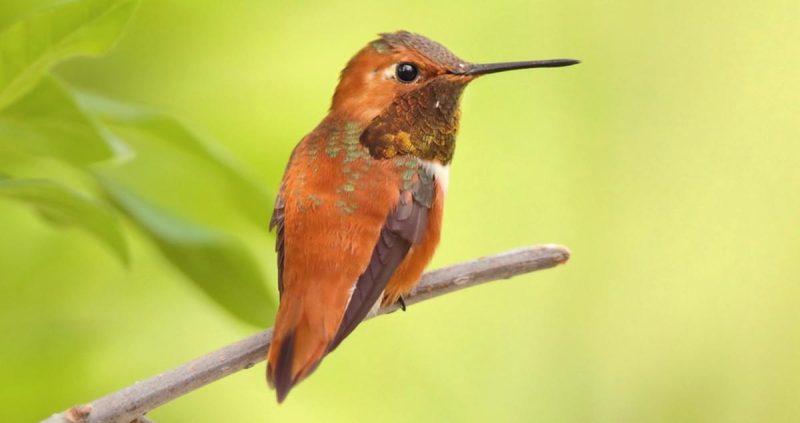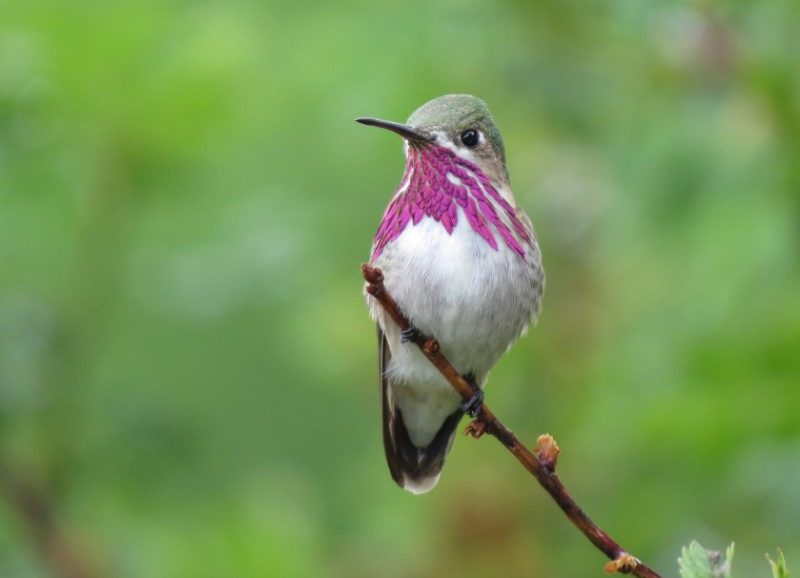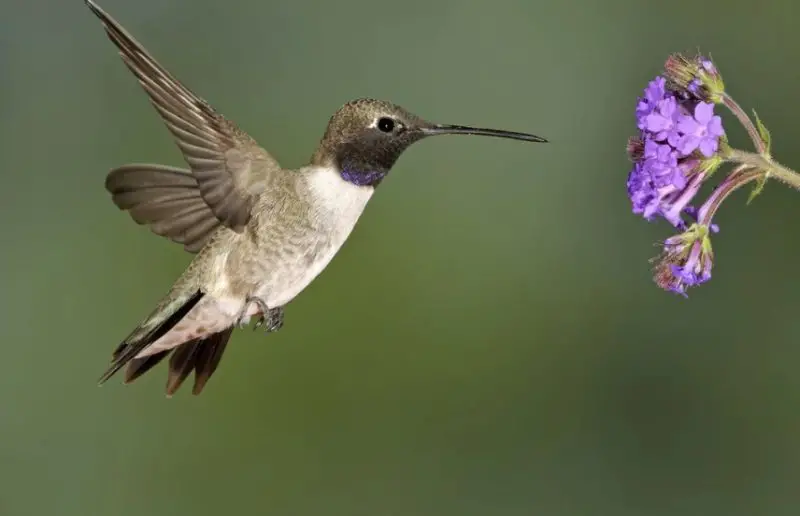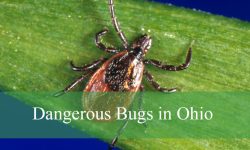Hummingbirds are among the most captivating birds found in New Hampshire, admired for their dazzling colors and ability to hover effortlessly while feeding. Their rapid wingbeats and tiny size make them both fascinating and challenging to observe. These energetic visitors bring life to gardens, woodlands, and meadows during the warmer months.
Only one hummingbird, the Ruby-throated Hummingbird, breeds in the state, making it the most familiar to residents. However, three other species—the Rufous, Calliope, and Black-chinned Hummingbirds—occasionally appear as rare visitors, often delighting bird enthusiasts with their unexpected presence. Identifying them requires careful observation and knowledge of their distinctive features.
This guide introduces all four types of hummingbirds recorded in New Hampshire. From their physical characteristics and behaviors to migration patterns and feeding habits, each section provides details to help birdwatchers recognize and appreciate these unique species. By understanding where and when to look, you can increase your chances of enjoying these remarkable birds up close.
Types of Hummingbirds Found in New Hampshire
Ruby-throated Hummingbird (Archilochus colubris)

The Ruby-throated Hummingbird is the only hummingbird species that breeds in New Hampshire, making it the most familiar to birdwatchers in the state. Males are striking, with a shimmering ruby-red throat that glows brilliantly in sunlight, a feature that gives them their name. Females, on the other hand, lack the red throat and are primarily green above with white underparts, making them more difficult to identify at a glance. Both sexes are tiny, measuring only about 3–3.5 inches long, yet they display incredible energy and agility in flight.
During the breeding season, these hummingbirds are commonly found in woodlands, meadows, and suburban gardens where nectar-rich flowers are abundant. They are strongly associated with tubular blossoms such as trumpet vine, columbine, and bee balm, but they also adapt easily to backyard feeders filled with sugar water. Their diet is not limited to nectar; they also consume small insects and spiders to meet their protein needs, especially during nesting.
Migration plays a crucial role in their life cycle. Ruby-throated Hummingbirds migrate long distances, traveling thousands of miles from Central America to New Hampshire each spring. Many cross the Gulf of Mexico in a single nonstop flight, an extraordinary feat for such a small bird. In New Hampshire, they typically arrive in late May and remain until September before heading south again.
Behaviorally, Ruby-throated Hummingbirds are highly territorial. Males are known for their aggressive defense of feeding areas, often chasing away not only other hummingbirds but also larger birds and even insects that venture too close. Their aerial displays and quick, darting flight make them a delight to observe at feeders and gardens.
For identification, birders should watch for the male’s ruby throat, which appears black in low light but flashes bright red when struck by the sun. The humming and rapid wingbeats—up to 53 per second—are also signature traits. Because of their familiarity and charm, the Ruby-throated Hummingbird is often considered the state’s summertime jewel.
Rufous Hummingbird (Selasphorus rufus)

The Rufous Hummingbird is a rare but increasingly reported visitor to New Hampshire, most often spotted during fall migration. Males are unmistakable, with their glowing orange-red throat and rusty body, while females are green-backed with rufous flanks and tails. This coloration sets them apart from the more common Ruby-throated Hummingbird, though careful observation is needed for accurate identification.
One of the most remarkable features of the Rufous Hummingbird is its migration. This species undertakes one of the longest migration journeys of any hummingbird, traveling from breeding grounds as far north as Alaska and western Canada to wintering areas in Mexico. Along the way, some individuals stray east, reaching New England and providing birders in New Hampshire with an exciting surprise.
Rufous Hummingbirds are known for their aggressive and fearless nature. Despite their small size, they often dominate feeders and flowering plants, even driving away Ruby-throated Hummingbirds. Their assertive behavior makes them a standout species when they appear, though they remain a rare treat in the Northeast.
They are typically associated with mountainous regions and open forests in their native range, but in New Hampshire, they are most likely to appear at backyard feeders in autumn. Reports usually come from mid-September through November, aligning with their southward migration. Some even linger into early winter if food sources remain.
For birdwatchers, spotting a Rufous Hummingbird in New Hampshire is a highlight of the season. Identifying them requires attention to the rusty plumage and their bold personality at feeders. With sightings increasing in the East over recent years, more birders may encounter this hardy traveler in the future.
Calliope Hummingbird (Selasphorus calliope)

The Calliope Hummingbird holds the distinction of being the smallest bird in the United States, measuring only about 3 inches long. Despite its tiny size, it is a strong flier, capable of covering thousands of miles during migration. Males are especially distinctive, with bright magenta streaks radiating from their throats in a fan-shaped pattern. Females and juveniles are less colorful, showing greenish backs and whitish underparts with buffy tones.
In their normal range, Calliope Hummingbirds breed in the mountainous regions of the northwestern United States and Canada. Their unexpected appearance in New Hampshire is the result of wandering individuals during migration. Though rare, they are increasingly reported in the eastern United States, particularly during late fall and winter months.
These hummingbirds are adapted to cooler climates, which may help explain why they occasionally turn up in New England. They are capable of entering torpor, a state of slowed metabolism, to survive chilly nights. This resilience allows them to endure conditions that might challenge other hummingbird species.
In New Hampshire, Calliope Hummingbirds are almost always seen at backyard feeders rather than in the wild, where their presence might otherwise go unnoticed. Their small size makes them more vulnerable to competition from larger hummingbirds like the Rufous, yet their persistence enables them to secure feeding opportunities.
Birders hoping to identify a Calliope should look for its petite stature and, in males, the striking magenta throat streaks. Females can be trickier, but careful observation of their buffy flanks and short tail relative to body size can help distinguish them. A sighting of this hummingbird in New Hampshire is considered a rare and special occurrence.
Black-chinned Hummingbird (Archilochus alexandri)

The Black-chinned Hummingbird is another rare vagrant in New Hampshire, with only a handful of records in the region. Males are best recognized by their black throat, which gleams with a thin purple band when the light strikes at the right angle. Females, however, look quite similar to female Ruby-throated Hummingbirds, making identification a challenge without close study.
Their typical range covers the western and southwestern United States, where they are common in deserts, riparian areas, and urban habitats. For one to appear in New Hampshire, it must have traveled far outside its usual migration path. Most sightings in the East occur during late summer or fall, often associated with feeders.
Black-chinned Hummingbirds are versatile in their feeding habits. They consume nectar from a wide variety of flowers and are frequent visitors to backyard feeders. They also capture small insects in midair, a dietary habit that provides essential protein during migration and breeding.
Behaviorally, they are somewhat less aggressive than Rufous Hummingbirds but still defend feeding territories when necessary. Their rapid wingbeats and ability to hover make them similar to other hummingbird species, though their vocalizations and subtle differences in plumage provide distinguishing clues for experienced birders.
Spotting a Black-chinned Hummingbird in New Hampshire requires patience and careful observation, particularly because of their resemblance to Ruby-throated females. Paying attention to the dark throat of males and the faint purple sheen can help confirm identification. For birders, this species represents one of the most exciting vagrant finds in the state.
Best Time and Place to See Hummingbirds in New Hampshire
If you want to see hummingbirds in New Hampshire, the best time is from late May through early September, when the Ruby-throated Hummingbird arrives to breed. This is the only species that nests in the state, so you will encounter them frequently around gardens, parks, and wildflower meadows. By September, they begin their long journey south for migration.
The rarer species—Rufous, Calliope, and Black-chinned Hummingbirds—sometimes appear as unexpected visitors, especially in fall migration when they stray from their typical routes. Setting up feeders with a sugar-water solution (1 part sugar to 4 parts water) is the most effective way to attract them. It’s important to replace the nectar regularly to keep it fresh and safe for the birds.
Ideal places to watch hummingbirds include flower-filled gardens, nature reserves, and woodland edges. In addition, residential areas with hummingbird-friendly plantings often become feeding stops for these birds. Many rare sightings in New Hampshire occur right at backyard feeders, so patience and careful observation can reward you with a special encounter.
FAQs about Hummingbirds in New Hampshire
What is the most common hummingbird in New Hampshire?
The Ruby-throated Hummingbird is the only species that breeds in New Hampshire and is by far the most common. It can be seen across the state during summer months.
Are there any other hummingbird species in New Hampshire?
Yes, though rare. Rufous, Calliope, and Black-chinned Hummingbirds occasionally appear as vagrants during migration, mostly in the fall.
When should I put out hummingbird feeders in New Hampshire?
Feeders should be put out by early May to catch the first arrivals and kept up until at least late September, or even early October, to help late migrants.
What flowers attract hummingbirds in New Hampshire?
Native and nectar-rich flowers such as bee balm, trumpet vine, cardinal flower, and columbine are especially attractive. These provide natural nectar while supporting local pollinators.
Can hummingbirds survive cold nights in New Hampshire?
Yes. Hummingbirds can enter a state called torpor, where their metabolism slows down significantly, allowing them to survive cooler temperatures, especially in spring and fall.






